A good fall garden cleanup is important for so many reasons. It will make your garden look tidier through the winter months, but it can also help you get ahead with spring gardening tasks, improve your soil, reduce pests, and so much more!

Whether you’re a beginning gardener or a seasoned pro, following these 18 simple tips and tasks is a surefire way to improve your garden and make your garden chores much simpler. Read on to learn the must-dos of autumn garden cleanup.
Jump to:
- 18 Autumn Garden Cleanup Essentials
- 1. Remove old plant matter from your veggie beds.
- 2. Apply mulch.
- 3. Start raking.
- 4. Clean out your gutters.
- 5. Make some compost.
- 6. Destroy diseased plant material.
- 7. Treat for grubs.
- 8. Divide perennials.
- 9. Pull out old annuals.
- 10. Weatherproof as needed.
- 11. Know which plants to prune.
- 12. Cut away damaged branches.
- 13. Be sure to mow.
- 14. Safely stow garden tools.
- 15. Drain out the hoses.
- 16. Protect cold-sensitive plants.
- 17. Store lawn ornaments and furniture.
- 18. Pick the last of your harvest.
- Frequently asked questions
- Summary
18 Autumn Garden Cleanup Essentials
Even as the growing season is coming to a close, there are still lots of important tasks to complete in the autumn garden. Fall is the perfect time to plant certain trees and shrubs and ornamental bulbs and garlic too. But some of the absolute most important garden chores for fall involve garden cleanup.
1. Remove old plant matter from your veggie beds.
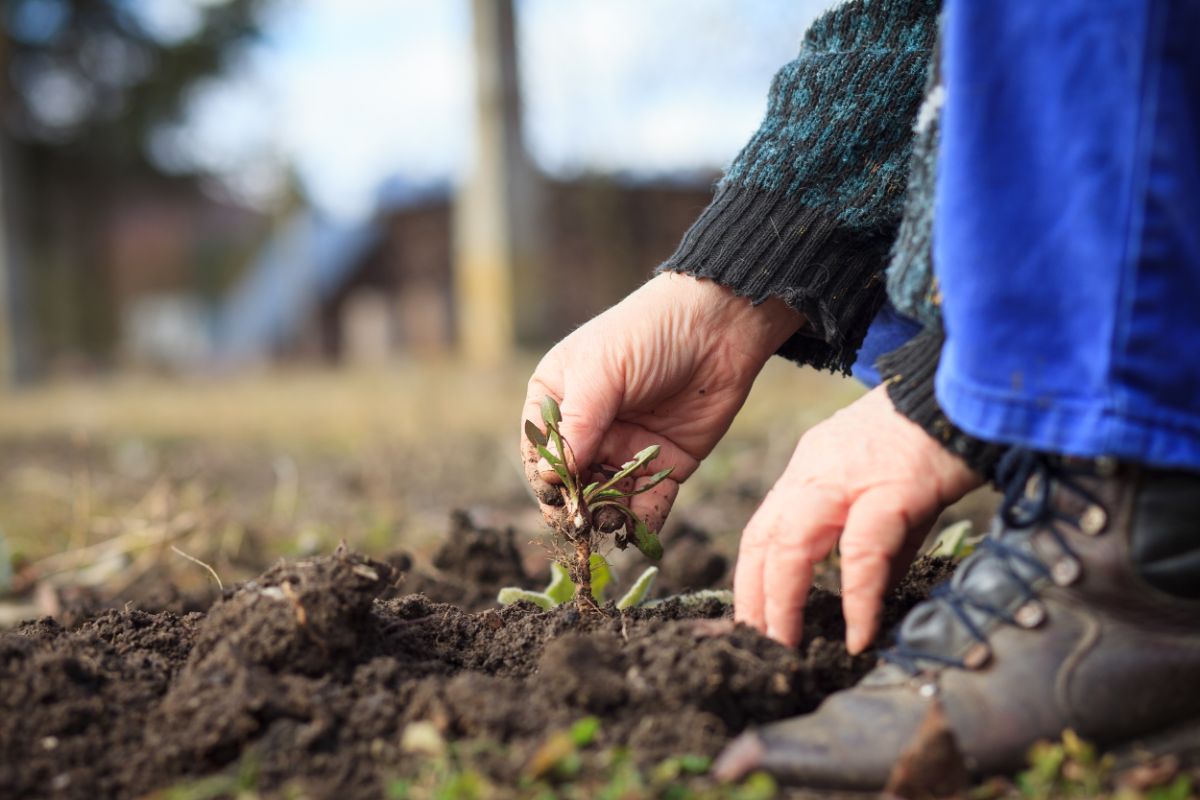
Pulling out old plant debris from garden beds is one of the most important tasks of fall garden cleanup. By removing old plant matter, you can drastically reduce the chances of overwintering pests and diseases and also reduce weed seeds too.
Depending on your climate, it is sometimes best to wait to remove old plant material until after the first hard frost of autumn. Just be sure you have enough time to complete the task before the ground freezes solid.
Move through your vegetable beds, pulling out old spent stems and any weeds you see. Tap off clumps of dirt that gather on plant roots so you don’t waste the rich soil you’ve spent all year creating in your garden!
Some gardeners opt to leave some old plant debris in place over winter for sleeping pollinators. How much you want to cleanup your beds in autumn is up to you, but at a bare minimum be sure to remove any plants that were infested with pests or diseases during the growing season.
2. Apply mulch.

After cleaning up your garden beds, adding a thick, 2 to 4” layer of natural mulch to your vegetable garden and ornamental beds will help everything look tidier. Mulch can also help protect soil from degrading when exposed to the elements, and it will work to protect tender roots from freezing temperatures. Even better, if you’re using a natural mulch, it will decompose over the winter, lending its valuable nutrients to your soil to support plant growth, beneficial microorganisms, and valuable earthworms too.
If you’re applying mulch to your ornamental plants, trees and shrubs, avoid placing mulch directly up against plant stems to prevent issues with tissue burn or rot. For veggie beds, simply apply a thick layer of mulch to evenly cover your soil.
Some of the best mulches for vegetable beds include salt marsh hay, weed-free straw, compost, or mulched autumn leaves (for a super budget-friendly option). Wood chips and bark mulch are popular choices for ornamental beds. To save on wood mulch prices, consider calling up tree removal companies in your area – sometimes, they will happily deliver a load of free wood chips right to your door!
Before laying down your mulch, you may want to add a layer of soil amendments too. Autumn is a good time to add fresh manure to your garden or slow-release soil amendments for pH balancing or nutrient boosts. For example, amendments like elemental sulfur, lime, gypsum, peat moss, and pine needles are best applied in fall.
3. Start raking.
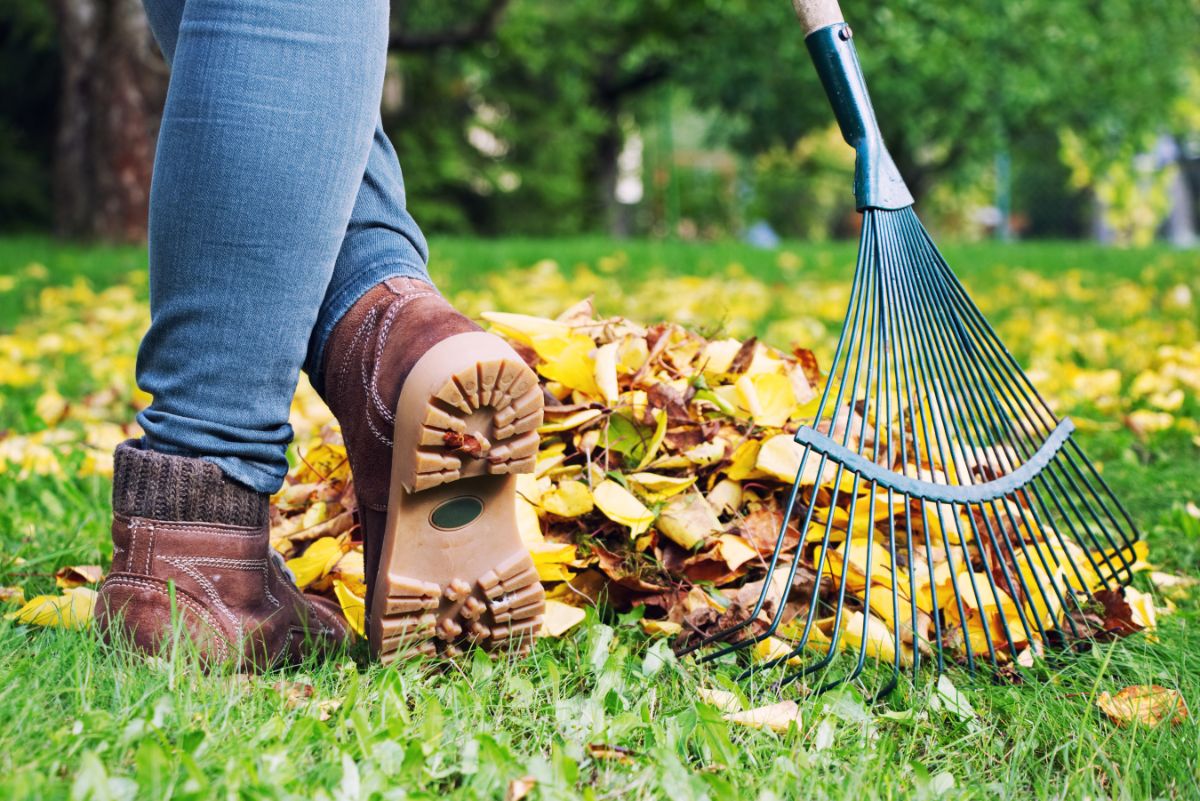
Of course, with all those autumn leaves falling, you’ll want to have your garden rake (or leaf blower) at hand throughout the season. Often, the easiest way to manage falling leaves is to plan to rake leaves several times a week to keep them from building up. To make the task easier, try to rake before rain too to prevent leaves from getting matted and sticky.
Unraked leaves can smother out plants and grass beneath them, so you’ll want to be sure to cleanup as many leaves as you can. The good news is that fallen leaves are full of valuable nutrients, like carbon, that plants crave, so mulch your leaves with a mulcher or your lawn mower as you go. After that, just apply the mulched leaves to your veggie and ornamental beds for a free organic mulch!
4. Clean out your gutters.
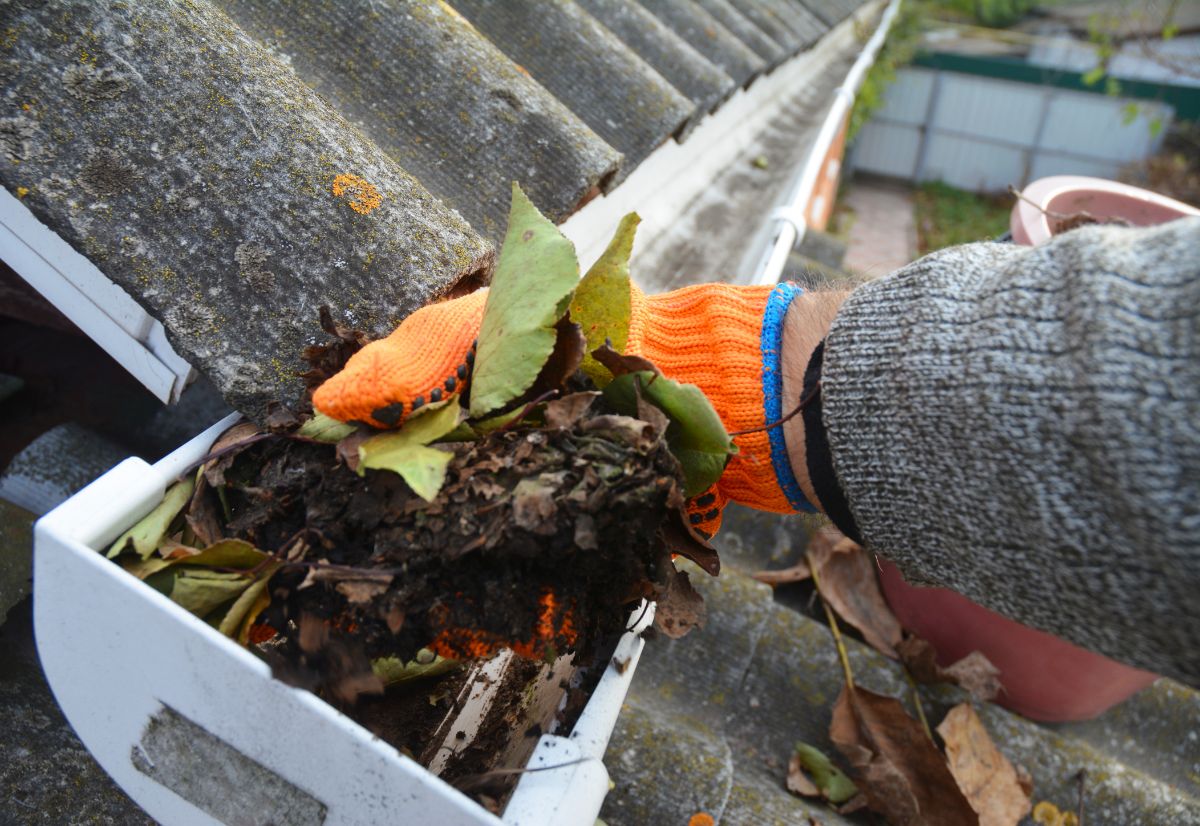
While you’re raking up fallen leaves, don’t forget to clean leaf litter out of your gutters too! Leaves and other debris can cause clogs in your gutters, which are unsightly but also potentially costly too.
Once winter truly arrives, clogged gutters can be prone to ice dams which cause gutters to pull away from your house. But worse than that, ice dams will often funnel water back towards your roof, causing potential leaks and water damage.
Use some thick gloves and a hand shovel to scoop away any messy leaf litter in your gutters, and then rinse everything out with your garden hose. With your hose running, check that the gutters are clean and that water is flowing smoothly through them.
Any waste you remove from your gutters can be added to your compost pile too.
5. Make some compost.
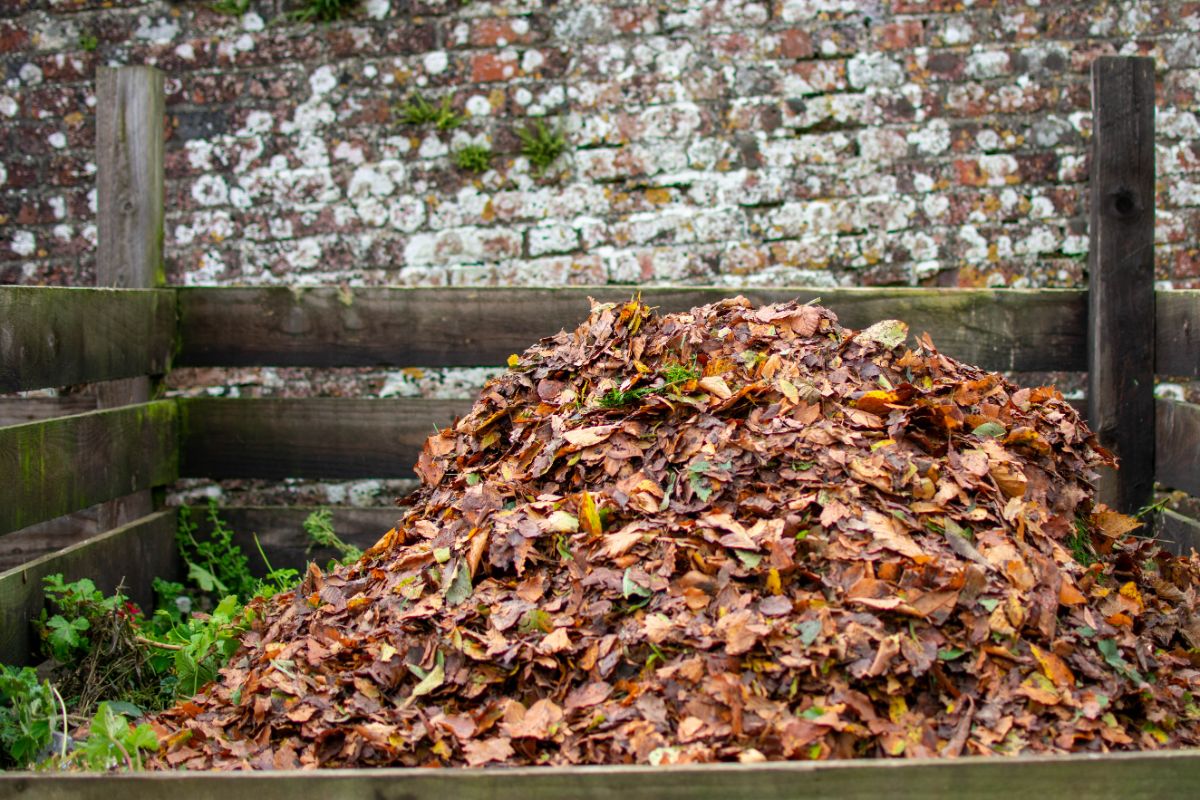
Put all those leaves and plant debris you’re piling up with your garden cleanup to good use by composting them. While active composting stops when temperatures drop below freezing, temperatures are usually warm enough during most of the autumn to get a good deal of composting done. Even when it gets too cool out, you can continue to add yard debris to your compost pile, which will break down in spring.
For best results with your compost pile, remember to layer carbon-rich material (like brown leaves and twigs) with nitrogen-rich material (like kitchen scraps) at a ratio of 3:1. To speed up composting, give your pile a stir from time to time and protect your pile from pest rummaging by burying fresh food scraps beneath a layer of autumn leaves or plant debris.
6. Destroy diseased plant material.
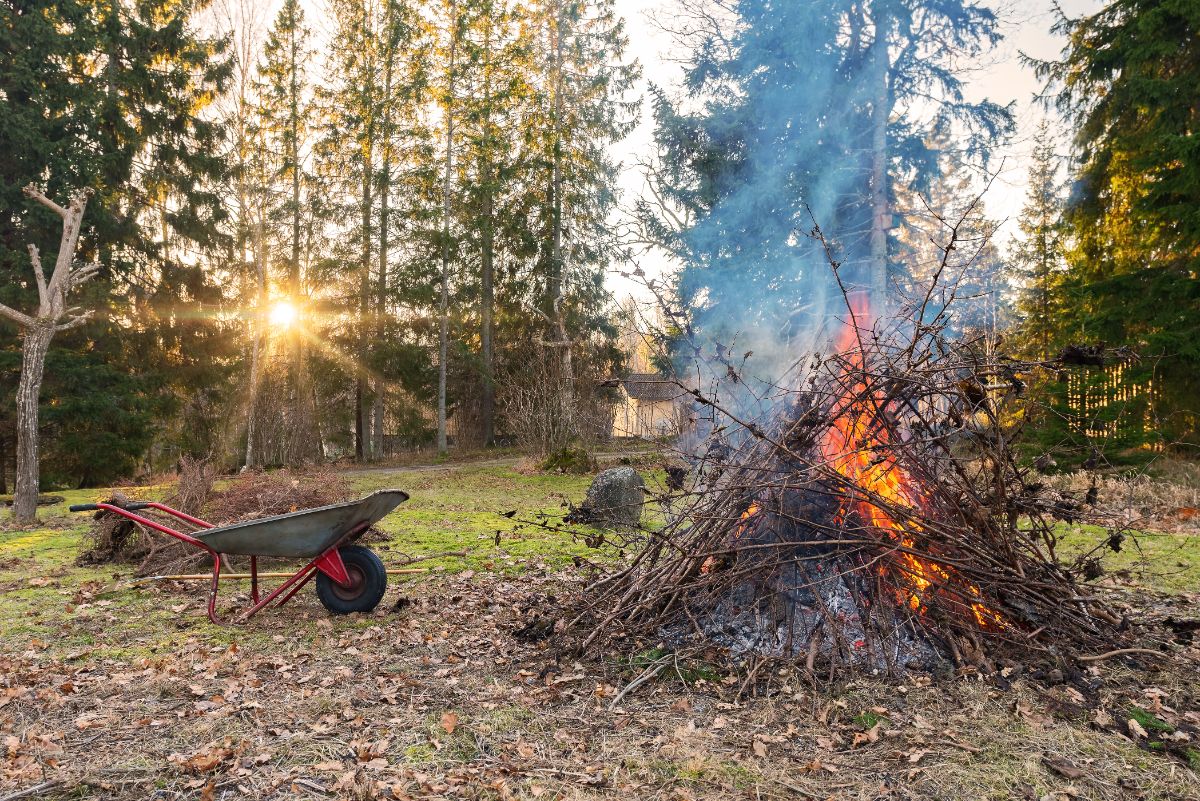
While most plant material and autumn leaves you pile up in fall are perfect compost additions, you’ll want to proceed with caution with any plant matter that was affected by disease or pests. Unless you’re doing hot composting and are carefully monitoring the temperature in compost pile, there’s a good chance that plant diseases and pests will survive the composting process and emerge again in spring if you use that compost.
Burning or bagging and trashing diseased plants is a much safer bet when it comes to disease prevention. For burn piles, just be sure to choose a safe day to burn plant material when the fire risk is low and never burn certain plant types, like poison ivy, which can cause respiratory distress.
If you do want to hot compost diseased plants, pick up a compost thermometer so you can monitor the temperature of your pile. Temperatures above 145°F will kill off most soil-dwelling bacteria, while higher temperatures of 160°F are needed to kill pest insects and 180°F will destroy weed seeds.
7. Treat for grubs.
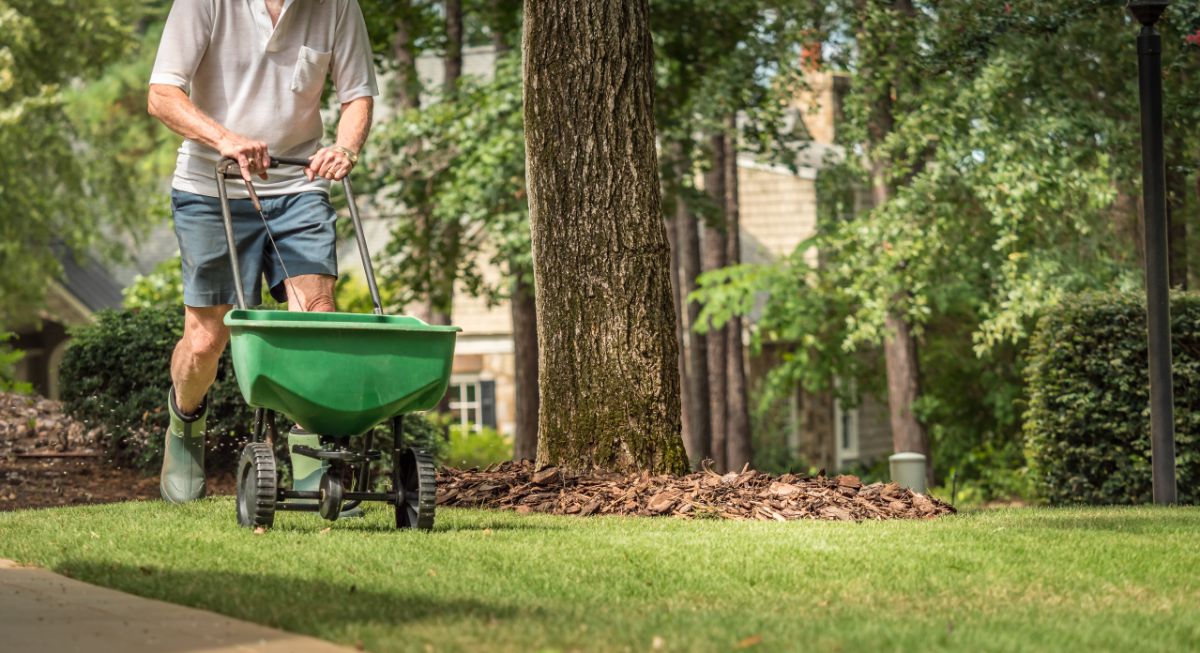
Destructive beetle pests, like Japanese beetles, can be a huge nuisance in the organic garden. Beetles and their grubs can be particularly troublesome if you’re growing plants they love to munch on, like raspberries.
Early fall is the best time to treat for beetle grubs to help prevent them from becoming a problem in next year’s garden. And, if you’re growing organically, one of the best ways to handle a grub problem is with milky spore.
Milky spore is made from a naturally occurring, soil-dwelling bacteria and is safe for organic garden use. To apply, fill up a broadcast spreader with milky spore and work your way across your lawn in a grid pattern, being sure to cover every spot. After finishing, water your lawn with your hose or sprinkler to help the milky spore saturate your soil.
8. Divide perennials.

Spring and summer blooming perennials, like lilies and peonies, are best divided in autumn. Dividing your plants will help prevent perennials from getting overcrowded, stimulates new plant growth and blooms, creates more plants for your landscape and prevents issues that occur from overcrowding (like mildew).
To divide your perennials, look for an overcast day on your weather forecast and then water your plants thoroughly the day before.
When you’re ready to divide, carefully dig up your plants with a shovel or gardening fork and then wiggle the plant roots apart, being careful not to damage them too much. Each section of divided plant should have lots of healthy roots and at least 3 to 5 shoots of plant growth.
After dividing your perennials, plant them throughout your garden and then water them in thoroughly to help them settle in. A thick layer of mulch can also ensure your new plants are well protected against winter’s chill.
9. Pull out old annuals.

After that first hard frost of fall, many annual plants will die back. These spent annuals can look quite unsightly in garden beds and containers, so you’ll probably want to remove them.
Simply pull out your old annual stems and shake off any residual dirt on the roots so it doesn’t go to waste. Unless your annuals suffered from an outbreak of pests or disease, they can be added into your compost pile as a carbon-rich compost material.
Because some annuals are more cold hardy than others, you may be able to plant a second batch of autumn blooming annuals or cold hardy plants for a late season pop of color. Some popular choices for late season annuals include flowering kale, pansies and snapdragons.
10. Weatherproof as needed.

After the hustle and bustle of summer, autumn can be a calmer season, so you may have time to catch up on garden tasks, like weatherproofing.
Outbuildings like garden sheds may need a new paint touchup to prevent water damage and rot. Pressure washing decks can remove slimy algae that creates a slippery hazard in winter. After cleaning, follow up your deck maintenance with a weathering proofing stain if needed.
Most paints and stains require a minimum temperature of 50°F to cure properly, so you’ll want to get all your painting done early in the autumn season before the cold sets in.
If you have a garage or outdoor potting shed, check if windows or doors could use some weather stripping to keep out the weather and reinstall storm windows if you have them too.
11. Know which plants to prune.

Some perennials, trees and shrubs can benefit from an autumn pruning. Cleaning up spent plant growth will help prevent disease spread and keep your plants looking tidier too. A well timed pruning can also promote more plant growth, rejuvenate stems and encourage more prolific flowering.
Not all perennials or larger plants should be pruned, but if plants die back and turn brown on their own, or stems are looking spindly or overgrown, pruning may be in order. Just keep in mind that some plants should only be pruned in spring or summer as a late fall pruning may remove the flower buds for the upcoming spring.
When pruning perennials, a good rule of thumb is to leave at least 3 to 5” of plant growth above the soil line when trimming back old, brown foliage; however, this may vary from plant to plant. For safety and to prevent disease spread, consider cleaning your garden pruners with a 10% bleach solution in between cuts to avoid transmitting bacteria or viruses from plant to plant.
Some perennials that benefit from an autumn pruning include:
- Bearded irises
- Lilies
- Peonies
- Hostas
- Phlox
Because some wildflowers often contain flower seeds that provide a valuable snack for birds during autumn and winter, try leaving plants like bee balm, echinacea and rudbeckia in place until spring. While you will want to prune back any diseased foliage, leaving some plants in place overwinter can help shelter pollinators during the cool months ahead.
12. Cut away damaged branches.

Old dead branches on trees and bushes are more than just unsightly. They can pose a serious health hazard too and may damage property if they fall, which is more likely to occur in winter due to heavy snow loads.
If you see any damaged limbs that look like they need removing, remove them if you think you can do so safely or contact a professional company to do the work for you. After removal, old branches can be cut up into kindling to keep your hearth cozy warm in winter, or mulch them up for compost or garden mulch.
13. Be sure to mow.
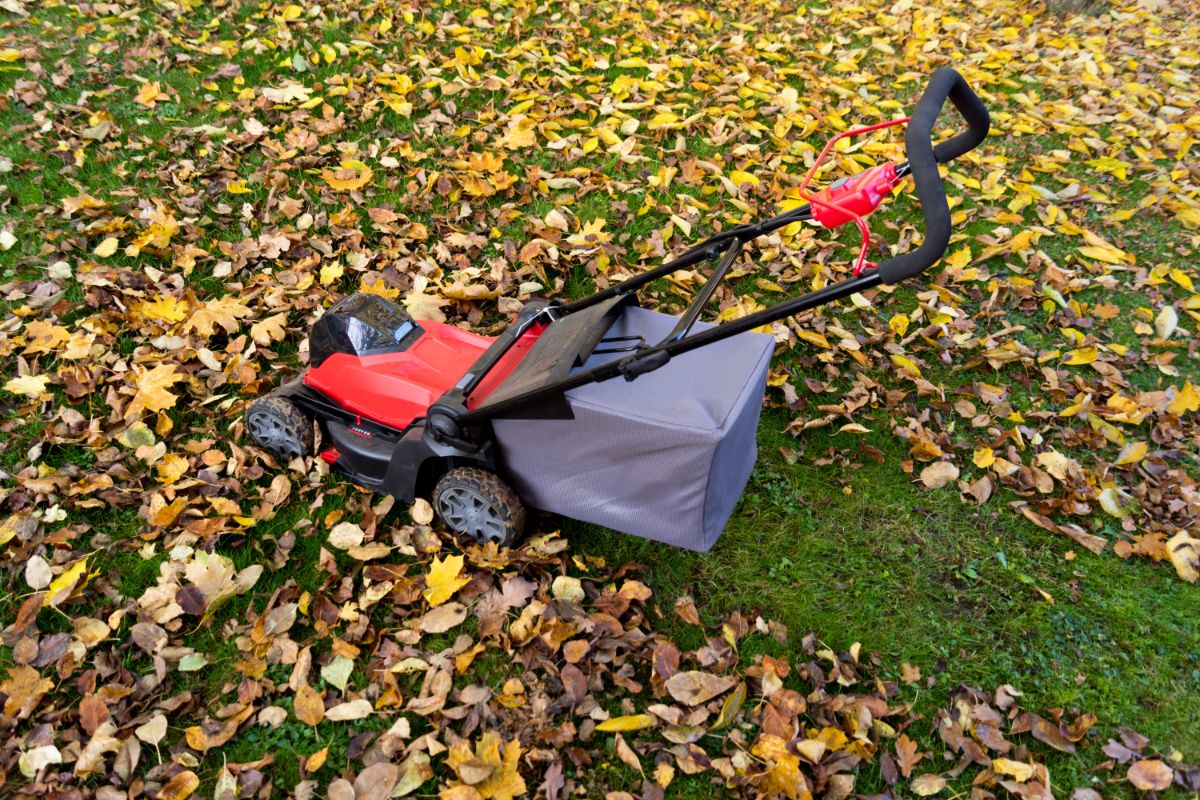
One final mow in autumn will help your lawn look neater during the winter months and give you a leg up on the spring growing season. If you have a mulching feature on your lawn mower, you can also use this time to get ahead with your raking duties.
When mowing your lawn in fall, set your mower blades to the lowest setting for a nice, short cut. This will help your lawn dry out faster in spring, which can promote lusher growth and a greener lawn.
14. Safely stow garden tools.
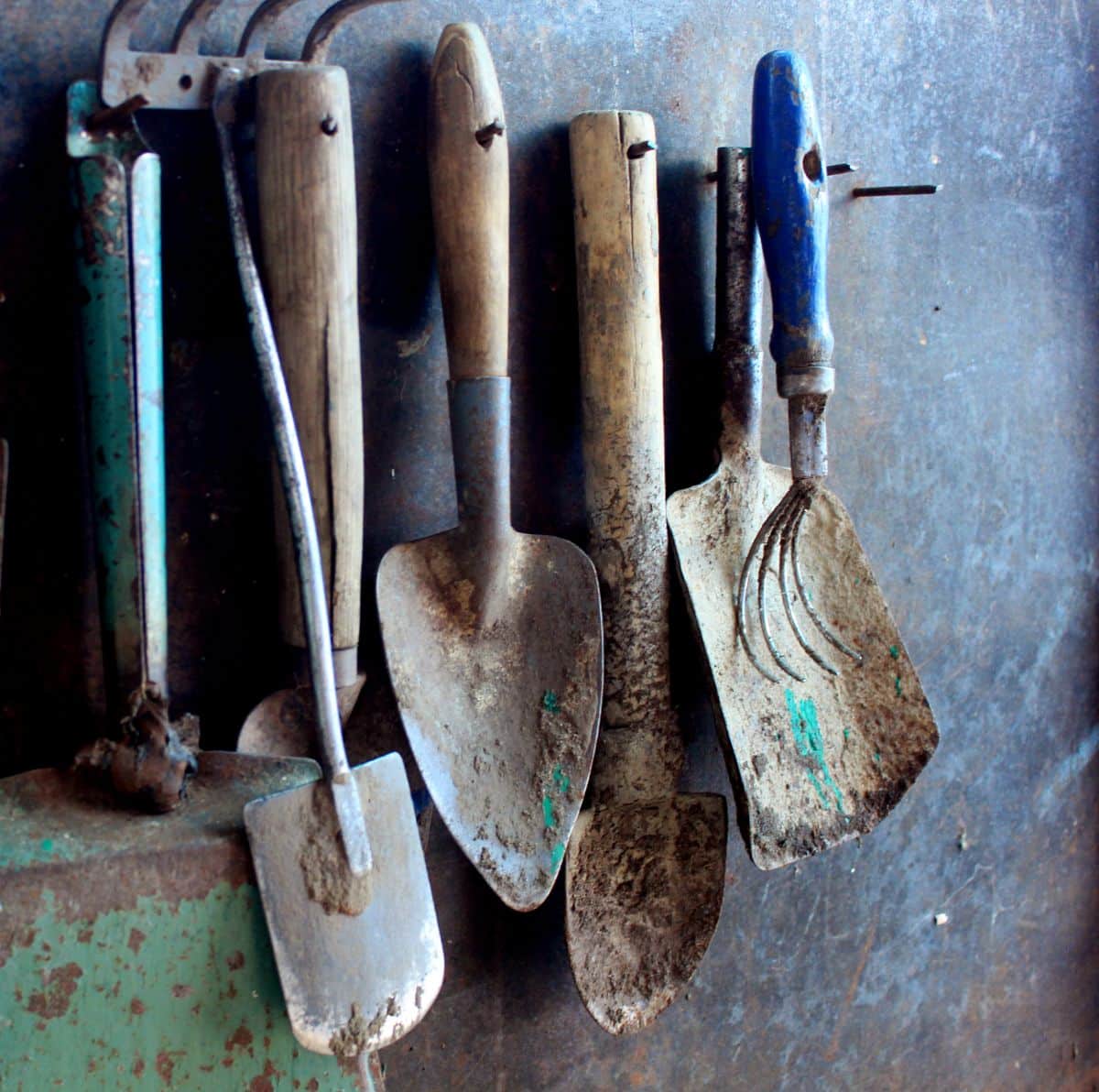
At the end of the season, it may be tempting to just throw all your garden tools into your garage or tool shed and forget about them until spring. But if you take care of your tools during autumn, they’ll be ready to use when weather warms and you can also significantly extend the life of your garden tools.
Prior to storage, give your garden tools – like shovels, hoes and rakes – a good blast with the garden hose to remove any caked on dirt or debris. If you see any spots of rust, try to remove them with some steel wool. Soaking your tools in undiluted distilled vinegar for 30 minutes prior to cleaning can help loosen stubborn rust for easier removal.
How to Clean, Maintain, and Store Garden Tools: https://gardening.org/clean-maintain-and-store-garden-tools/
After scrubbing away any rust and dirt, coat your tools with a thin layer of oil to help preserve them even further. Tung or boiled linseed oil are often the top oils to use for this task; however, cooking oil will work in a pinch.
Once your tools are cleaned and oiled, hang them up in a dry area of your storage shed or garage. When spring arrives, your tools will be looking fresh and ready for use!
15. Drain out the hoses.
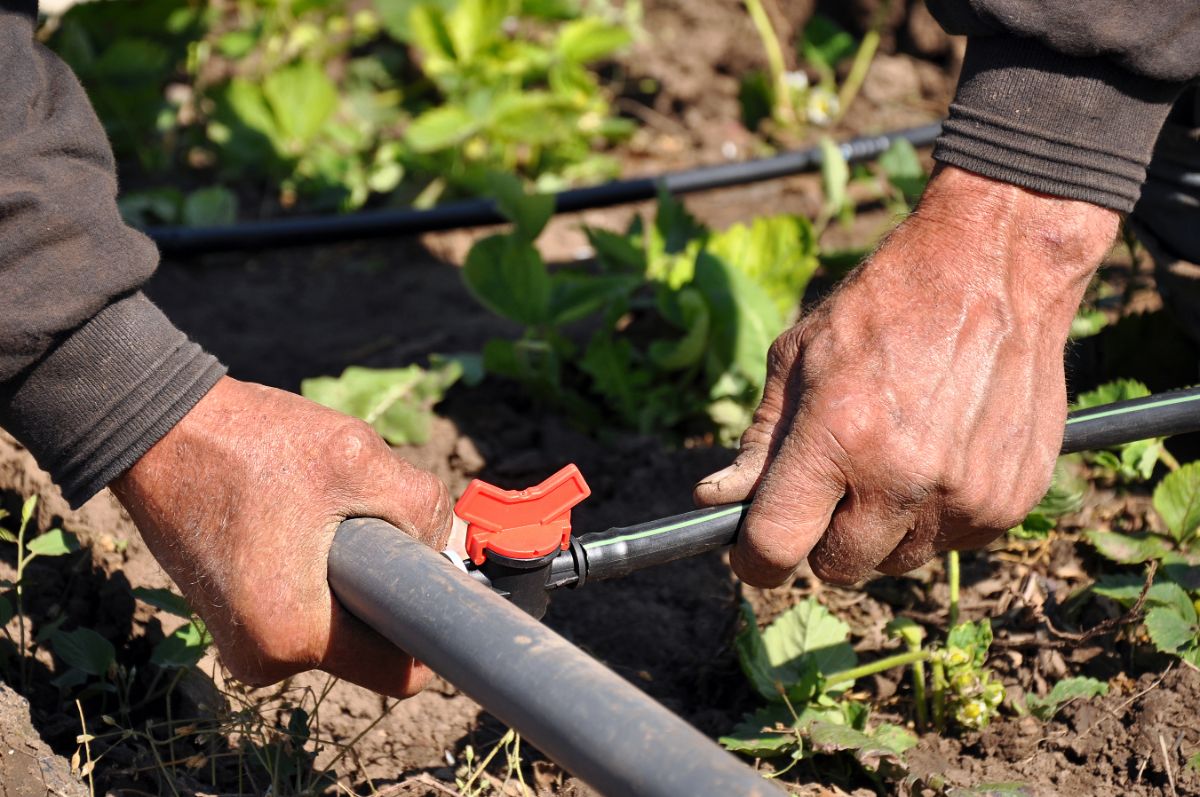
Water expands when it freezes, so any water that is left sitting in hoses or drip irrigations systems may cause hose lines to crack. For this reason, draining out any garden hoses in autumn is a critical step in annual garden maintenance.
If you have a hilly yard, simply detach your garden hose from your spigot and lay it out in your garden to naturally drain on its own. Once your hose is thoroughly drained, wind it up and store it in an outbuilding or on a hose hanger.
Drip line systems don’t need to be taken entirely apart, but remove the end pieces to allow the majority of the water to naturally spill away from mainline tubes. Recap the tubes after draining and then disconnect your system’s timer, pressure regulator and filter from your spigot and store those pieces indoors until spring.
Draining outdoor hose lines in this manner can also discourage rodents from chewing on lines during winter in search of water.
16. Protect cold-sensitive plants.
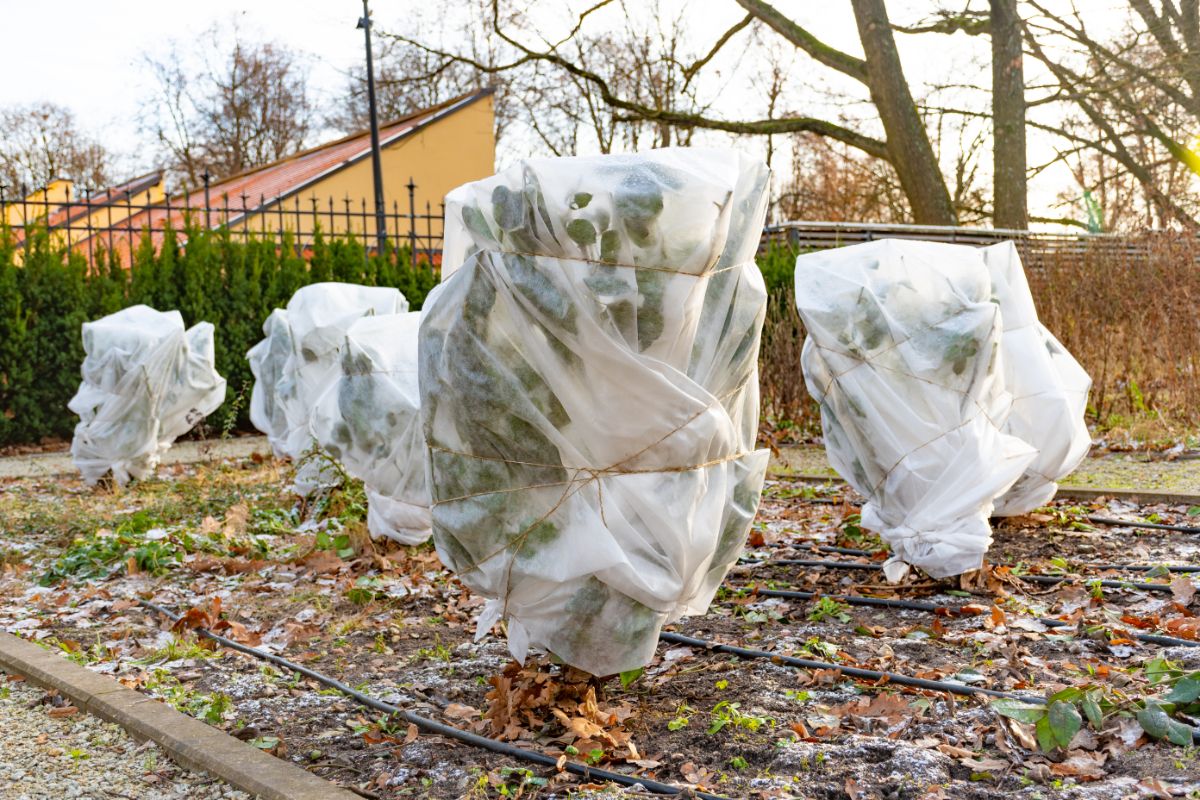
While many native plants should be well-adapted to winter conditions in your area, some more temperate species may require additional protection from the cold.
Burlap wrappings secured to wooden stakes or a thick layer of mulch can help protect more sensitive plants from cold temperatures. Very sensitive plants, on the other hand, may need to be overwintered in a protected outbuilding or moved indoors as houseplants.
If you do choose to move plants inside during the winter months, consider treating them with an organic insecticidal soap before doing so to avoid accidentally bringing pest insects indoors too.
17. Store lawn ornaments and furniture.
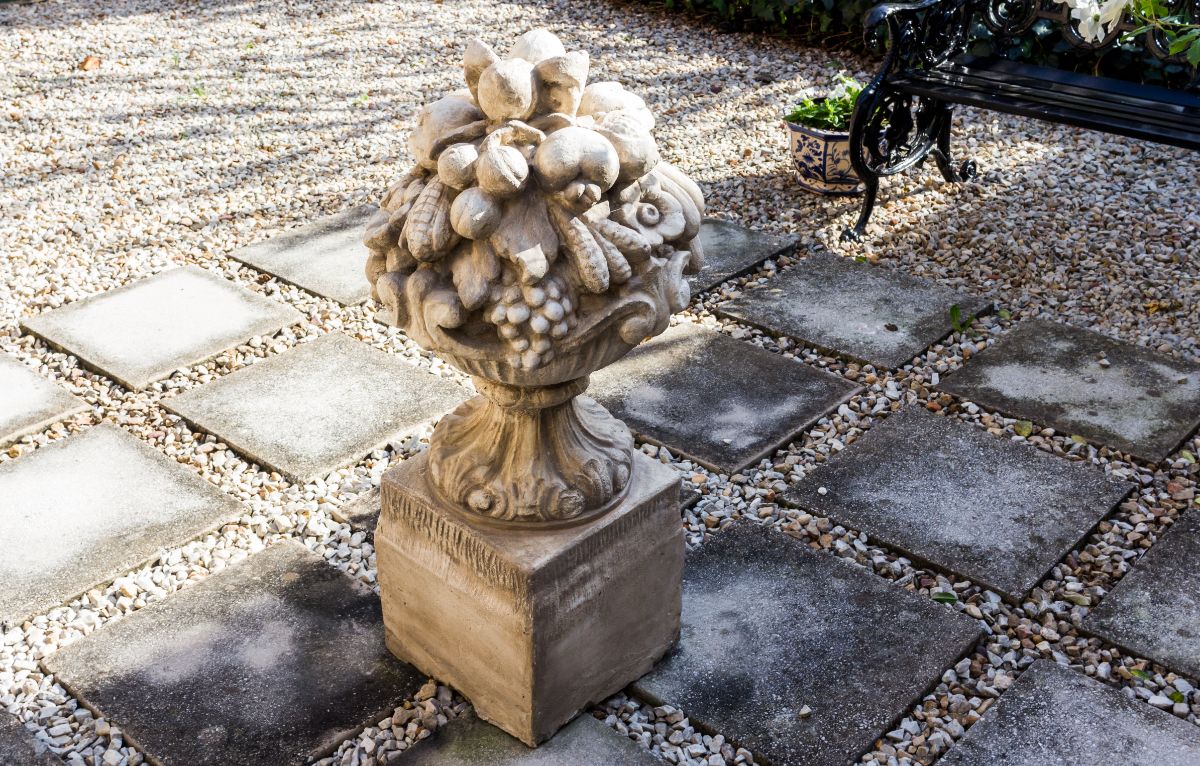
Moving outdoor ornaments and lawn furniture into outbuildings and garages can help extend the lifespan of your pieces significantly.
Cement lawn sculptures, in particular, can crack when exposed to winter weather unless they’ve been sealed with a concrete sealer. If you don’t want to seal your statues, you can also cover them with weather-proof tarps for extra protection.
Water fountains should also be drained and may need to be inverted or covered with a tarp.
18. Pick the last of your harvest.
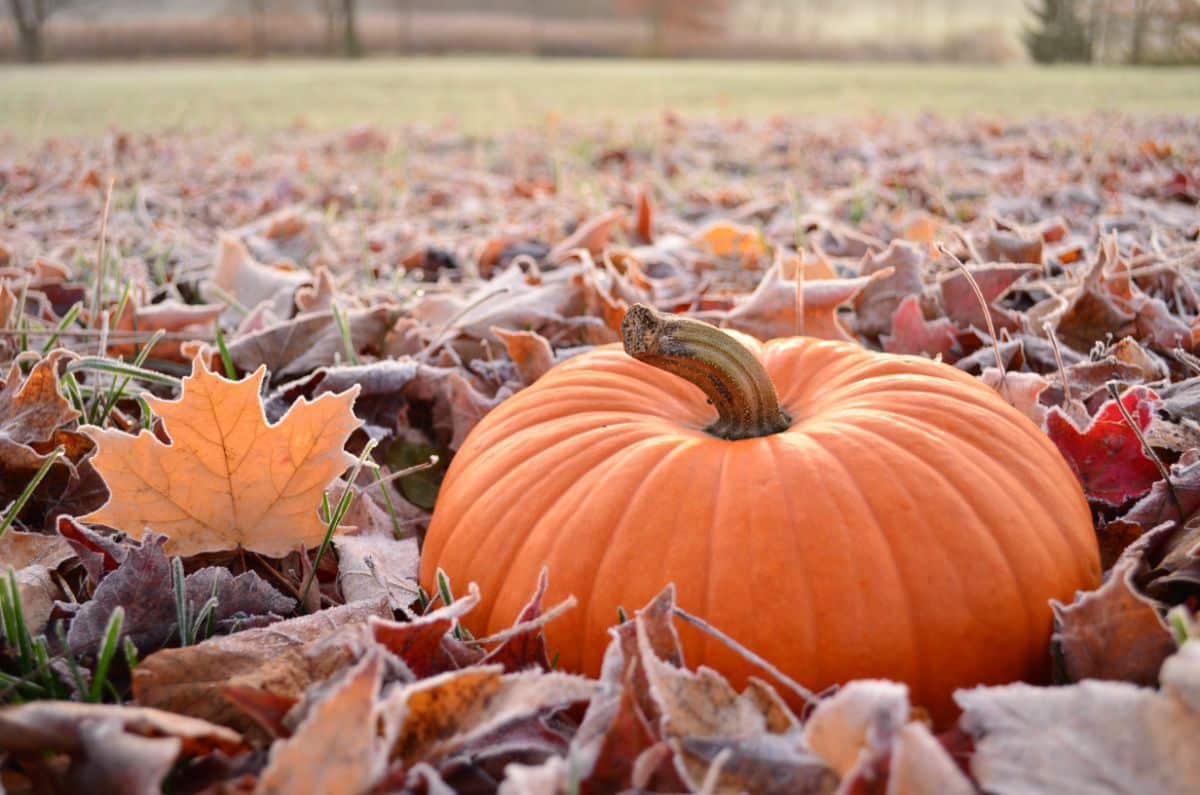
With frost on the forecast, you’ll want to hurry to get the last of your autumn’s harvest indoors before the cold really sets in. An unexpected cold snap can kill annual plants, but it can also render fruit and vegetables mushy and inedible.
To prevent harvest loss, be sure to gather your crop in as quickly as you can. If you end up with more produce than you can use, try out home preservation. Lacto-fermenting pickles, canning tomatoes, freezing, or dehydrating herbs are all perfect ways to ensure your harvest doesn’t go to waste.
Frequently asked questions
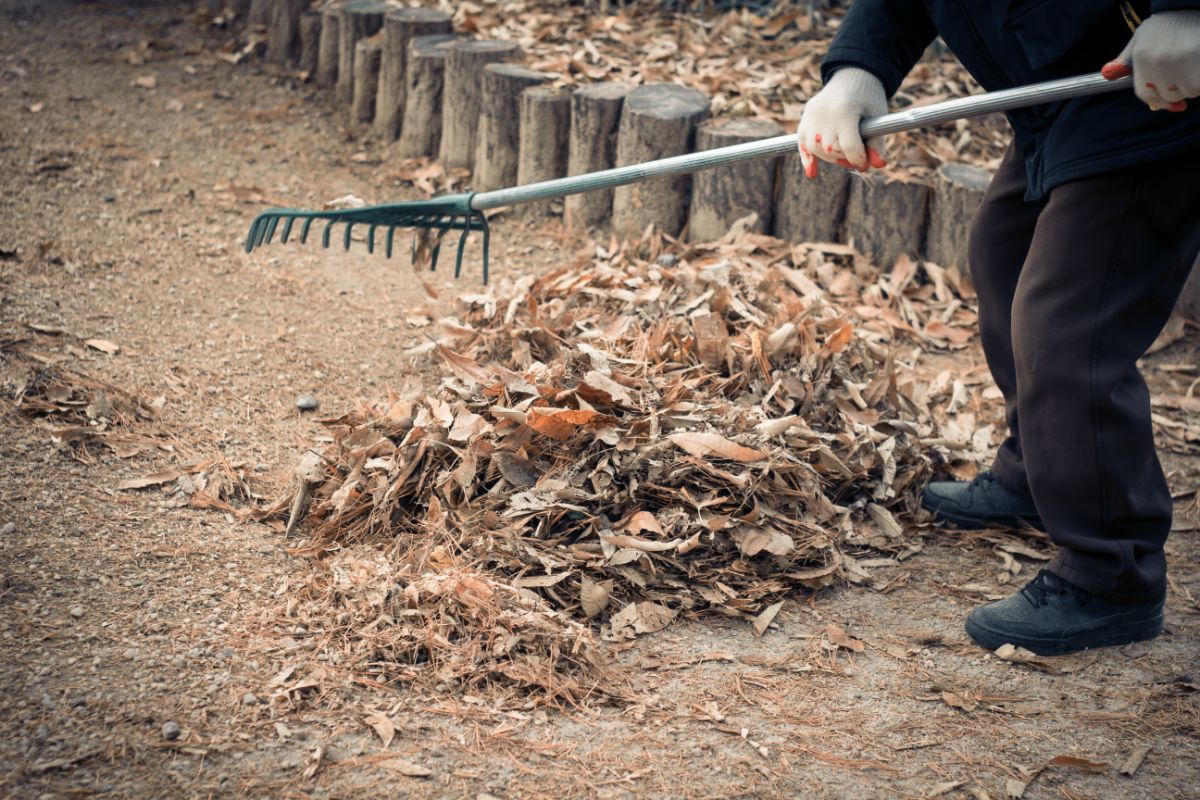
Ideally, you’ll want to wait until after the first few hard frosts have killed back plant vegetation. Avoid starting too early, which can damage your plants and cut their growing season short.
That’s up to you. Any diseased or pest-infested plant material should be removed and destroyed, but the remaining plant debris can be left in place for overwintering pollinators or removed for a tidier appearance.
Slow-release minerals and amendments (like elemental sulfur and gypsum) are best added in the fall. Autumn is also a good time to top your garden off with fresh manure and a layer of organic mulch.
Plants like azaleas, rose of Sharon, some hydrangea species, roses, lilacs and lavender should be pruned in spring, not fall.
Autumn leaves are rich in valuable nutrients, so it’s a waste to trash them. Instead, mulch leaves with your lawn mower or a dedicated mulcher to create a rich organic mulch for veggie or ornamental beds.
Summary

Autumn is the perfect time to clean up your garden beds, get rid of old plant debris and polish up your gardening tools for the growing season ahead. Taking care of your fall gardening tasks will simplify your spring gardening to-do list, help prevent overwintering pests and produce a healthier garden overall.
If you enjoyed this article, check out our piece on flowers to plant in fall to liven up your autumn garden even more!


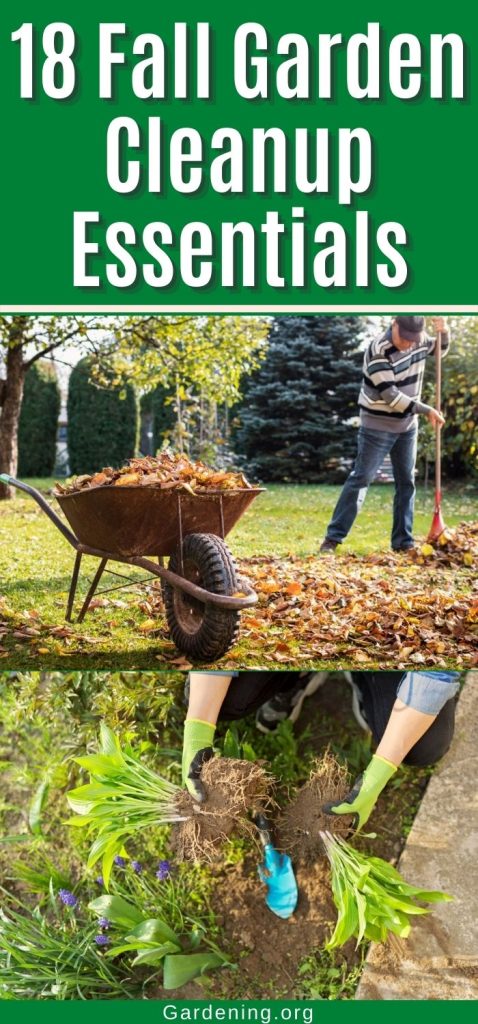
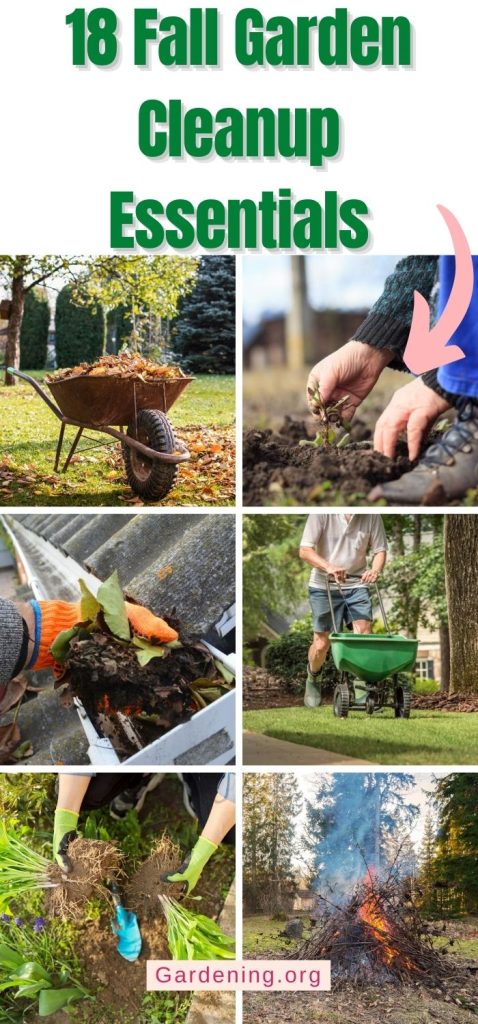
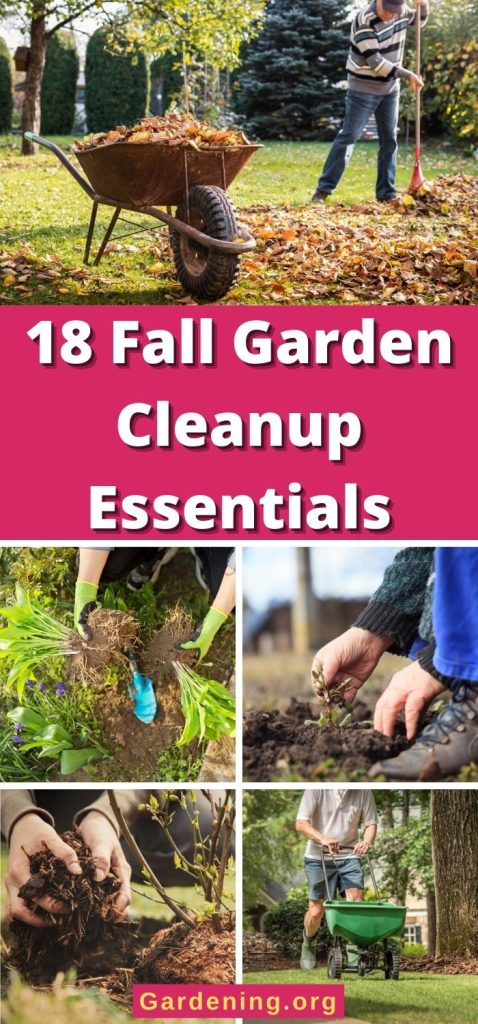
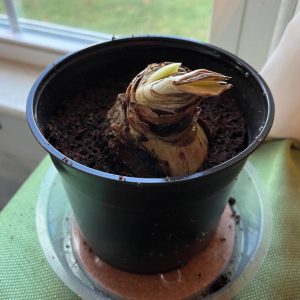



Leave a Reply